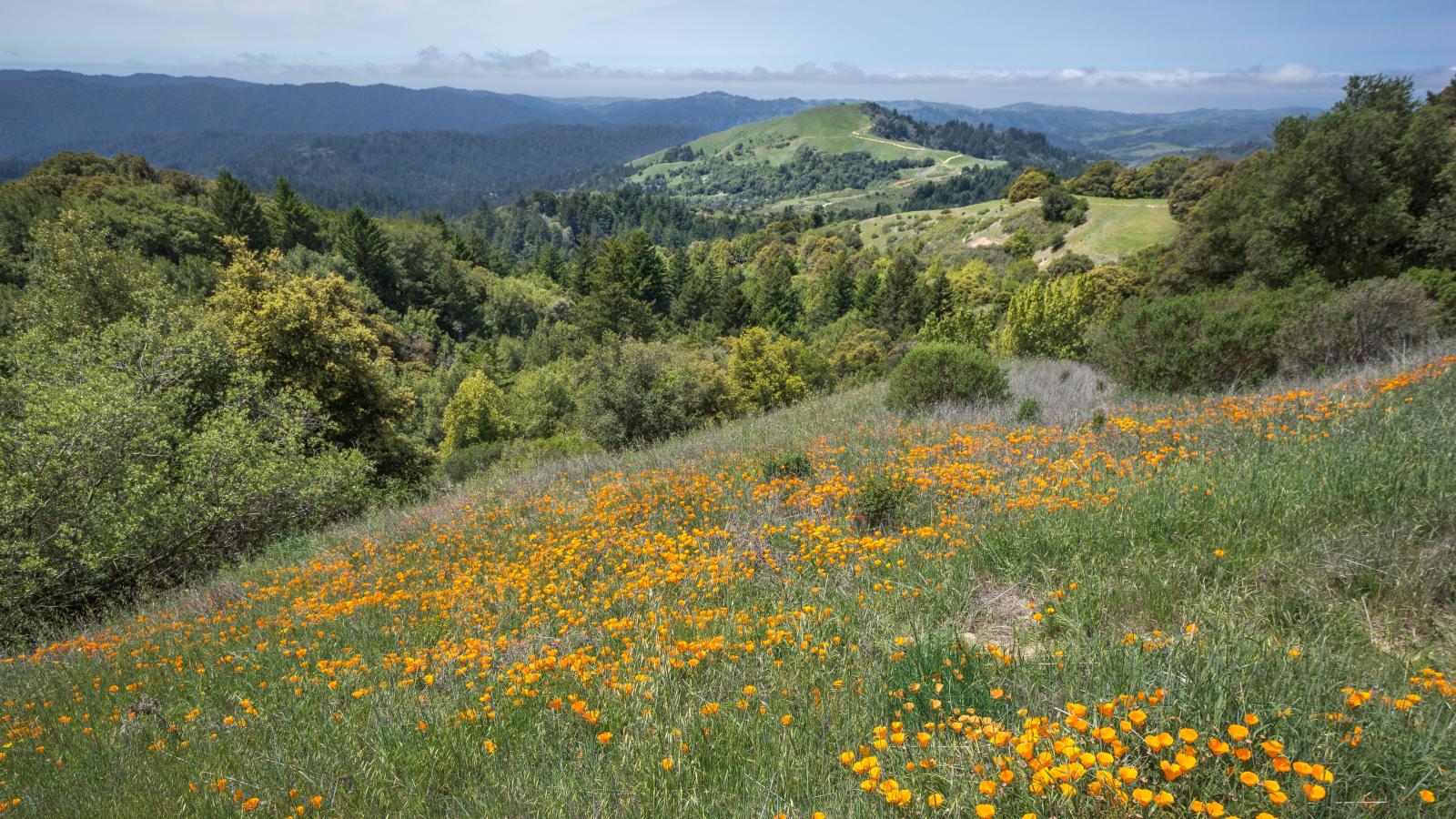Summer 2015
Like so many of you, this winter I spent more time than I usually do wondering when it was going to rain. It was the same last winter. I mark the progress of the rainy season by the water levels in several ponds that I pass by during my walks in the open space. I watched those ponds stay dry all of last year due to the amount and pattern of the rains, which meant that the Pacific chorus frogs, Western toads, and California red-legged frogs didn’t breed at all in those small watersheds. The 2014 age class just didn’t happen. Though drier altogether, this year was different. The rains came in a few large storms and it was enough to fill those same ponds. I was pleased to see that the amphibians, with that pent-up ardor, adapted quickly and the 2015 age class is now doing relatively well, although they will need to spend a good deal of time underground in gopher holes as the ponds dry up again this summer. It’s easy to feel helpless during this extended drought, so here at Midpen we are involved in a number of projects that are intended to support the environment and improve water management on the preserves. Here are some examples you might find interesting:
Over the past six years, we have carefully engineered and rebuilt five major stock ponds in La Honda Creek Open Space Preserve to support breeding of the endangered California red-legged frog. The ponds are designed to hold water only through August so the red-legged frog tadpoles can develop and leave the pond, after which the ponds dry up to prevent the invasive bullfrog from completing its breeding cycle. On Driscoll Ranch, also in La Honda Creek Open Space Preserve, the grazing tenant has installed seven new 5,000-gallon water tanks and 20 new water troughs, all of which are connected to a system of natural springs by 29,000 feet of new pipe. The water finds its way to the troughs, which are set low to the ground so that wildlife, in addition to cattle, has easy access. The water then flows back into a natural channel and, ultimately, into San Gregorio Creek. The grazing program is managed to maximize native grass and forb diversity, benefiting wildlife, the ecosystem in general, and local food production.
To further enhance water resources, particularly along the San Mateo Coast, the District is discussing a pilot “fog harvesting” project to explore the feasibility of collecting fog, still available in the summer when we need it, through the use of collectors that act much like the needles of a redwood tree. The object would be to provide additional water for wildlife and agriculture during the summer — particularly during this drought, when it has become much more important. There are a few coastal regions in the world that have substantial summer fog and, fortunately, the San Mateo Coast is one of them.
Taking the long view, Midpen continues to enhance the local environment by purchasing properties, remediating damage and contamination, and restoring the land to its natural state so that it can effectively perform its essential life support functions of carbon uptake, oxygen production, water purification, food production, and much more. We have done this work for many years and it continues. And while we can’t stop the drought or solve every environmental problem, we can manage the resources that you, the public, have entrusted to us so that the actions we take will be part of the solution on a regional scale and, perhaps, serve as an example on a much larger scale.

Stephen E. Abbors
General Manager

